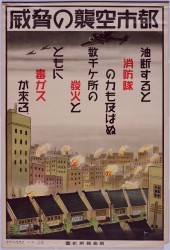Flies and cockroaches
As everyone knows, cockroaches are supposedly the only creatures able to survive a nuclear explosion.Which may be an exaggeration, but not by much. Well, I think I’ve found the pre-atomic, chemical equivalent! It’s from a novel published in 1926: Poison gas in the open is one thing. Dropped on a densely populated town like London […]


